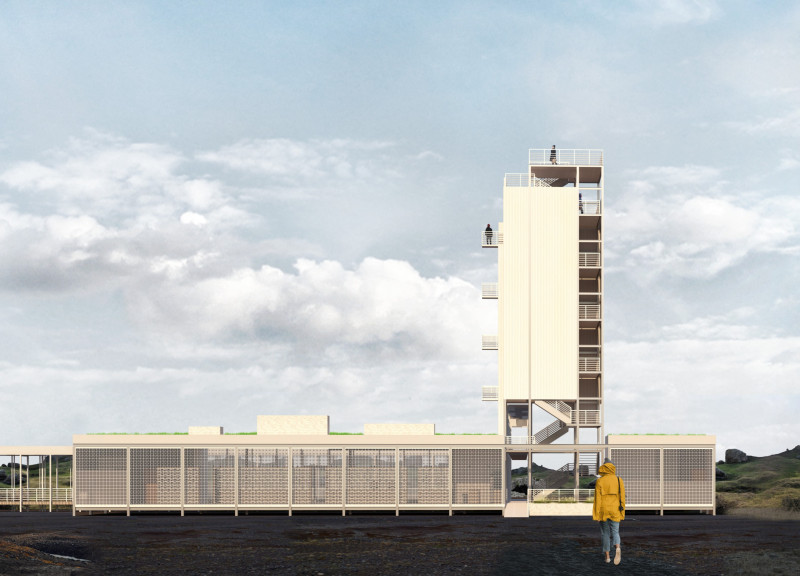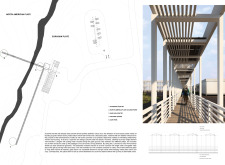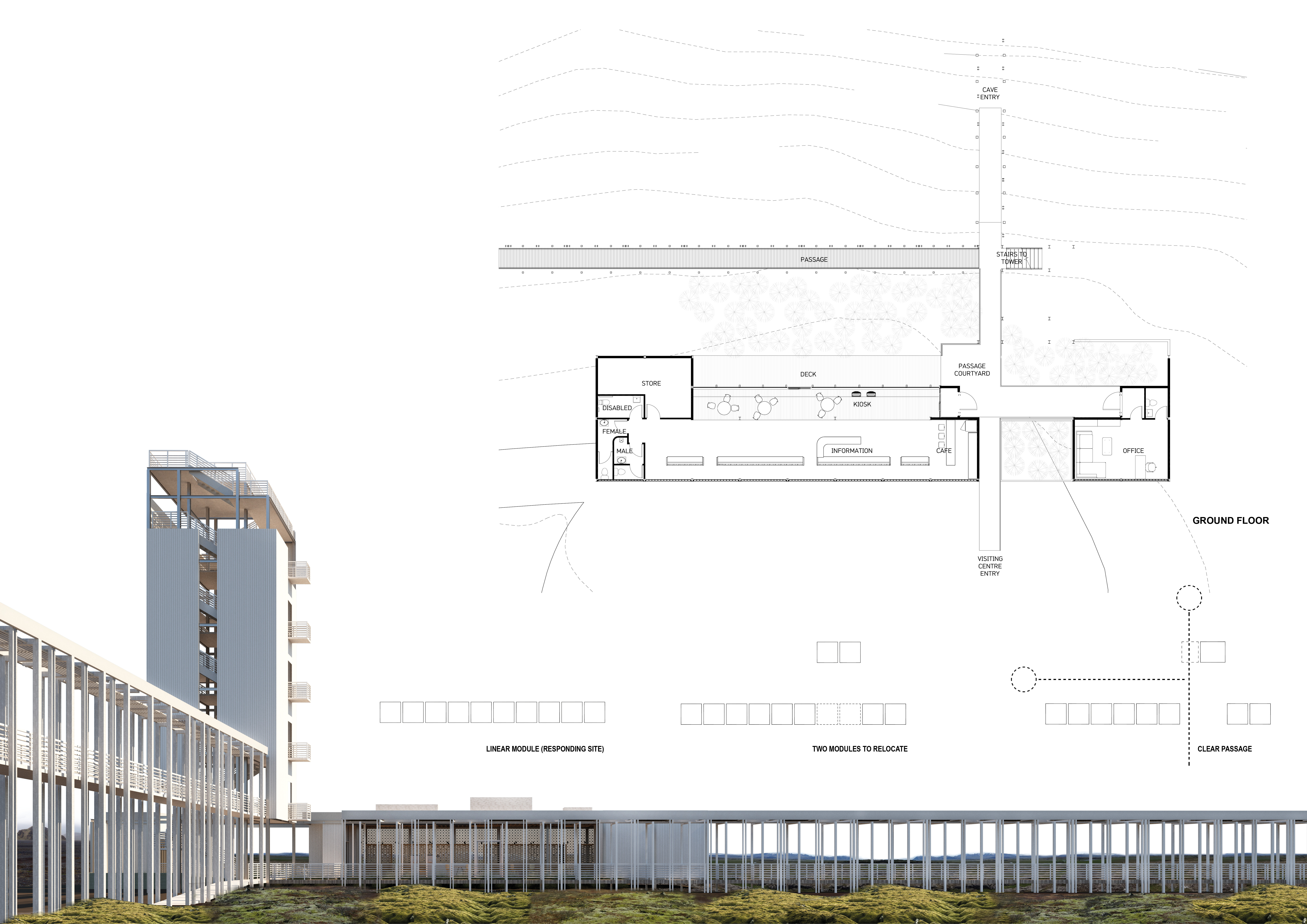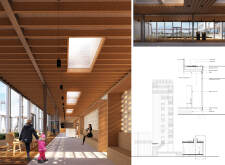5 key facts about this project
The service station serves as a vital infrastructure element, accommodating visitors who seek rest and refueling for their journeys. It incorporates distinct zones for various functions, including a visitor center, café, and community engagement areas, facilitating a seamless flow of movement for patrons. The layout emphasizes efficiency, ensuring that essential services are organized for easy access. The building’s design aims to forge a connection between users and the environment, enhancing both their experience and enjoyment of the location.
Unique Materiality and Aesthetic Integration
One key aspect that differentiates this service station from conventional designs is its innovative use of materials. A combination of Steel Metal Composite and precast concrete has been employed to ensure structural stability and durability, necessary for enduring local weather patterns. The integration of glass blocks in the façade allows for abundant natural light, creating a welcoming atmosphere. This design choice not only serves an aesthetic purpose but also enhances energy efficiency.
Additionally, the extensive use of natural timber battening within the interior adds warmth to the space, contrasting the industrial feel of the exterior. Lightweight concrete blocks facilitate tactile interaction while maintaining a cohesive design language. The planted roof, featuring local flora, actively contributes to the building's ecological footprint, reinforcing the project's commitment to sustainability.
Functional Layout and Visitor Experience
The project’s functional layout is carefully crafted around user experience. The ground floor features the visitor center as the primary hub, providing essential information and resources. Adjacent to this area, the café serves as a social space where visitors can unwind and interact. Community engagement areas are strategically placed to offer facilities for rest and refreshment, ensuring that visitor needs are prioritized.
Directional cues throughout the service station guide users effectively, promoting a sense of orientation within the space. Entry points have been designed to enhance accessibility, encouraging smooth transitions between various service areas. This dual focus on functionality and user-centered design contributes to an overall positive visitor experience.
The service station stands as a modern architectural interpretation of a roadside facility, integrating thoughtful design with practical requirements. Its unique approach to material selection and layout serves to enhance not only the functionality of the space but also its connection to the surrounding environment.
For a comprehensive understanding of the architectural plans, sections, and designs, readers are encouraged to explore the project presentation further. This deeper insight will provide additional context regarding the innovative architectural ideas and methodologies applied within this project.


























